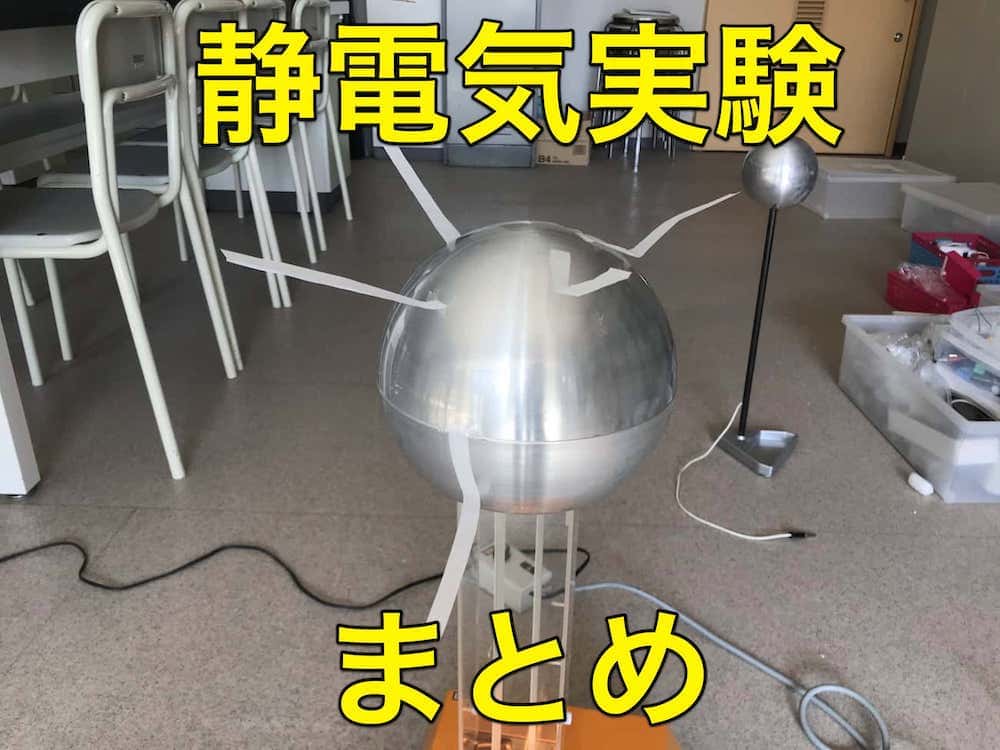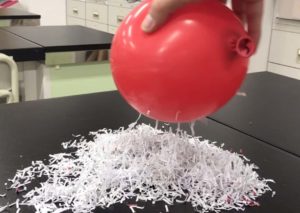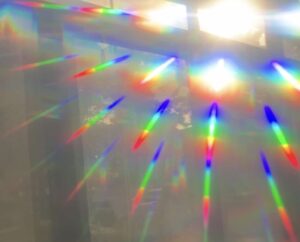Walk Your Soda Can with a Balloon: The Secret of Electrostatic Induction
Hi, I’m Ken Kuwako, your Science Trainer! Every day is an experiment.
That familiar crackle when you take off a sweater in winter, or the classic fun of using a plastic ruler to make your hair stand on end… That’s Static Electricity, and it’s all around us. But did you know you can use this tiny electrical force to move an empty soda can, almost like magic? The can will roll right after a balloon without you even touching it! It looks exactly like the can is a friendly pet following its owner on a walk. Today, I’ll show you how to do this fun, mysterious science trick easily at home!
Time to Prepare the Magic!
You only need common household items, so you can start experimenting right away.
- An empty can (a light aluminum can works best)
- A balloon
- A handkerchief, small towel, or tissue paper
The Experiment
- Vigorously rub the balloon with a handkerchief or towel. This is the magical chant for building up energy!
- Place the empty can on a flat surface, like a desk, with the opening facing sideways.
- Gently bring the rubbed balloon close to the can. What will happen?
Amazing! The can will slowly roll, drawn right to the balloon. This is the “Rolling Can Walk”!
The Science Secret: Why Does the Can Move?
The real identity of this magic is a scientific phenomenon called Electrostatic Induction. It might sound complicated, but it’s easy to understand if you look at what’s happening inside the can like a story.
- The Balloon Becomes Negatively Charged! When you rub the balloon, it gathers a large amount of negative electrical charge, a process known as Electrification.
- The Electrons Panic Inside the Can! As the negatively charged balloon approaches, the “free electrons” (negative particles) inside the aluminum can freak out, thinking, “Oh no, more negative charge is coming!” Since like charges repel, they all scramble to get as far away from the balloon as possible.
- The Attractive Force of Positive and Negative! Because the electrons fled, the side of the can closest to the balloon now has a deficit of electrons, resulting in a positive charge. The negatively charged balloon and the positively charged side of the can are now like the North and South poles of a magnet. They create a force, pulling each other, essentially saying, “Come closer!”
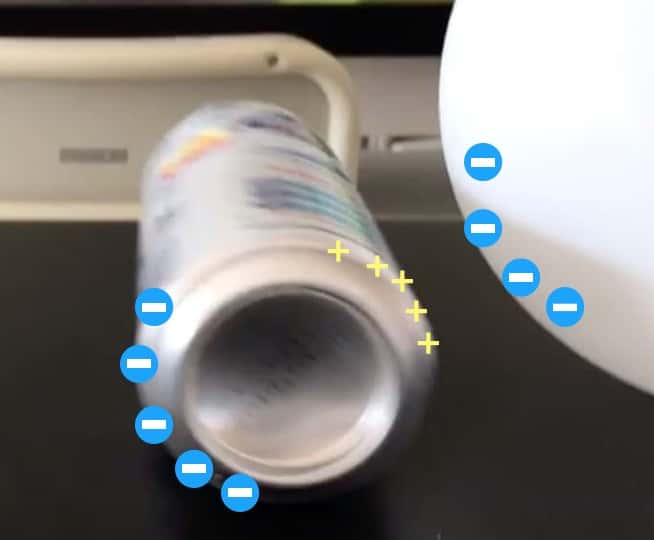
This phenomenon—where an electrical object (the balloon) is brought near, causing the target (the can) to separate its charge into positive and negative, and the opposite charge is attracted—is Electrostatic Induction. A good way to remember it is: ‘Static’ ‘Electricity’ ‘Induces’ and ‘Leads’ the charge alignment of the other object.
Because the aluminum can is light and round, this small force is enough to make it roll. Go ahead and try this fun science magic at home! (Side note: I also supervised an article about this experiment, titled “Science Magic: The Friendly Balloon and Aluminum Can,” in the March/April issue of ‘Success 12’ by Global Education Publishing.)
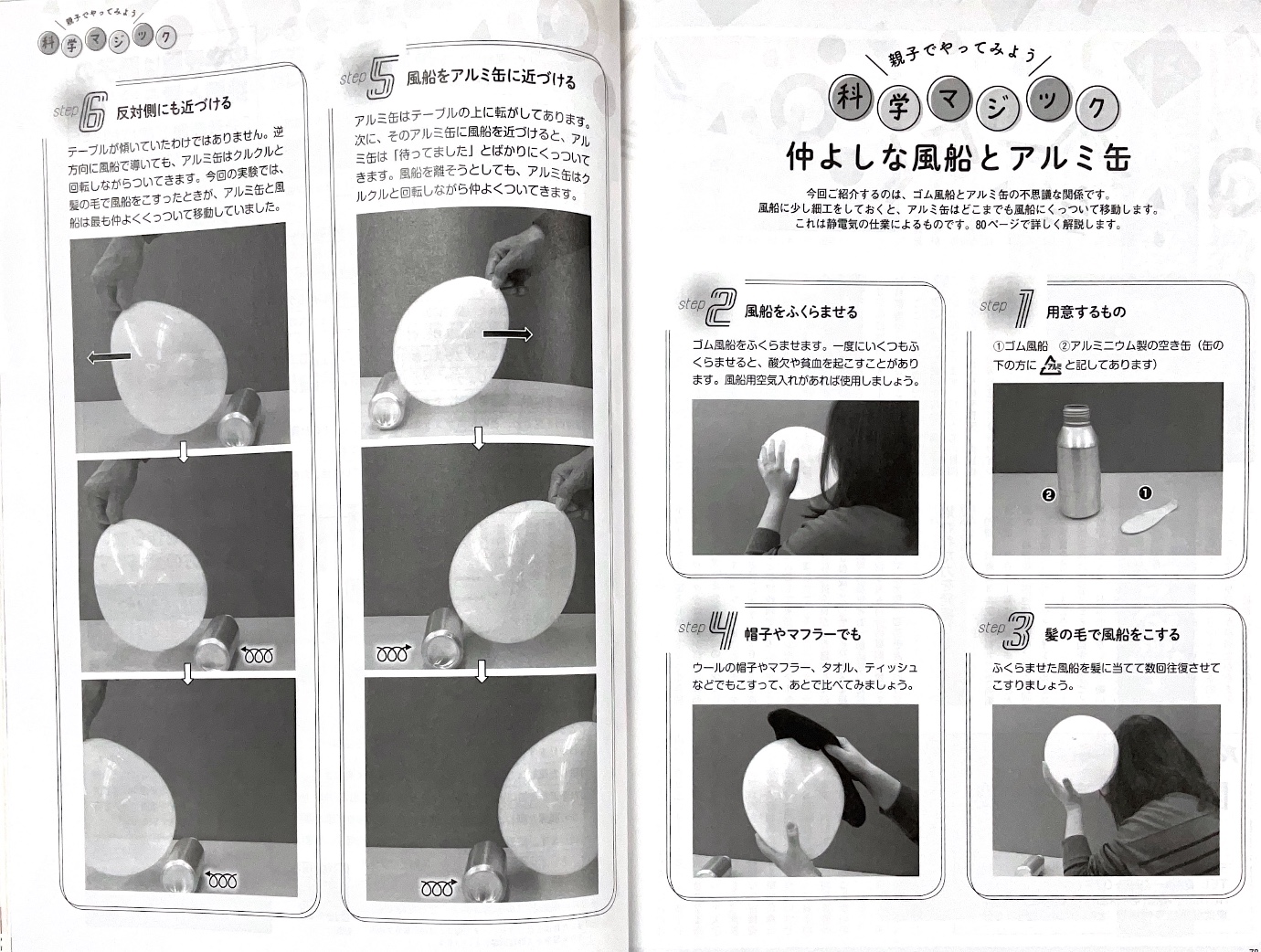
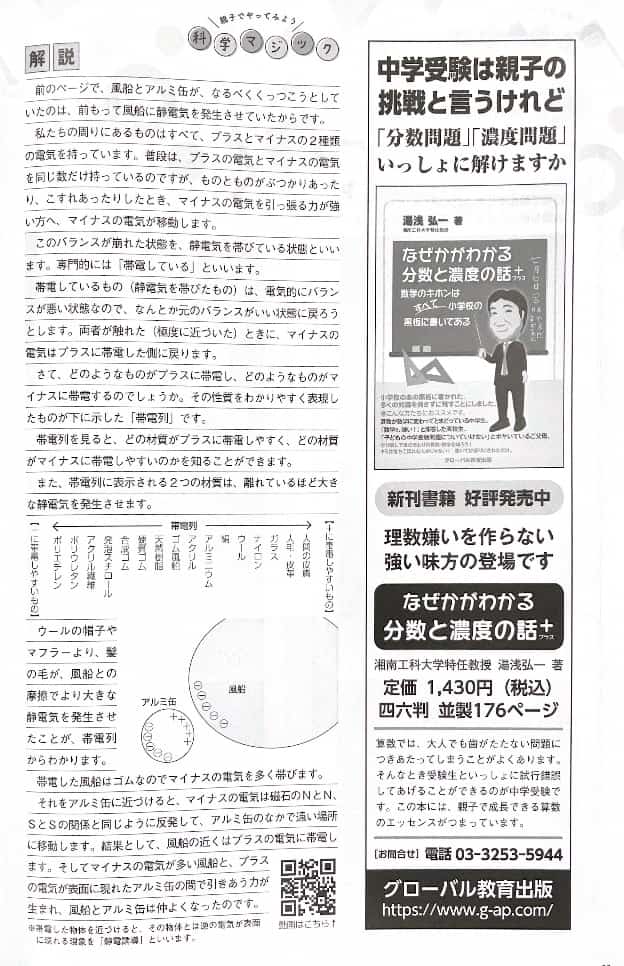
[Advanced] The Even More Amazing World of Static Electricity!
When you supercharge the power of static electricity, you can see even more fascinating phenomena. Experiments using a Van de Graaff generator can make all your hair stand up or make a fluorescent light bulb glow without touching it!
I’ve even performed this experiment on TV with celebrities like Suzu Hirose, Ryohei Suzuki, Yasuko, and Chocolate Planet’s Osada and Matsuo. You can see the details here.
WARNING: Experiments using a Van de Graaff generator are very dangerous and must only be conducted under the supervision of a professional. For requests regarding static electricity experiments (e.g., science classes, TV supervision, or appearances), please contact me here.
[Feature Article]: Static Electricity Experiments You Won’t Be Able to Stop Doing!
Contact and Booking
I aim to bring the wonders and fun of science closer to you! I’ve put together easy-to-understand guides on fun science experiments you can do at home and the tips for them. Feel free to browse around!
・The content from this science blog is now a book. Find out more here
・About the creator, Ken Kuwako: click here
・For various requests (writing, lectures, science classes, TV supervision, appearances, etc.): click here
・Get article updates on X!
![]() Experimental videos are available on the Kagaku no Neta Channel!
Experimental videos are available on the Kagaku no Neta Channel!

